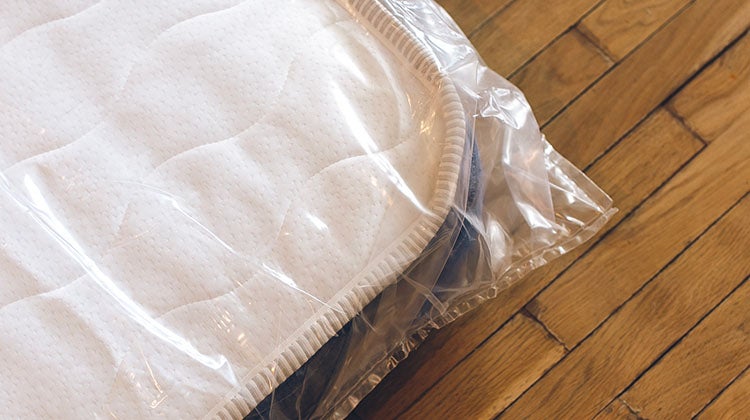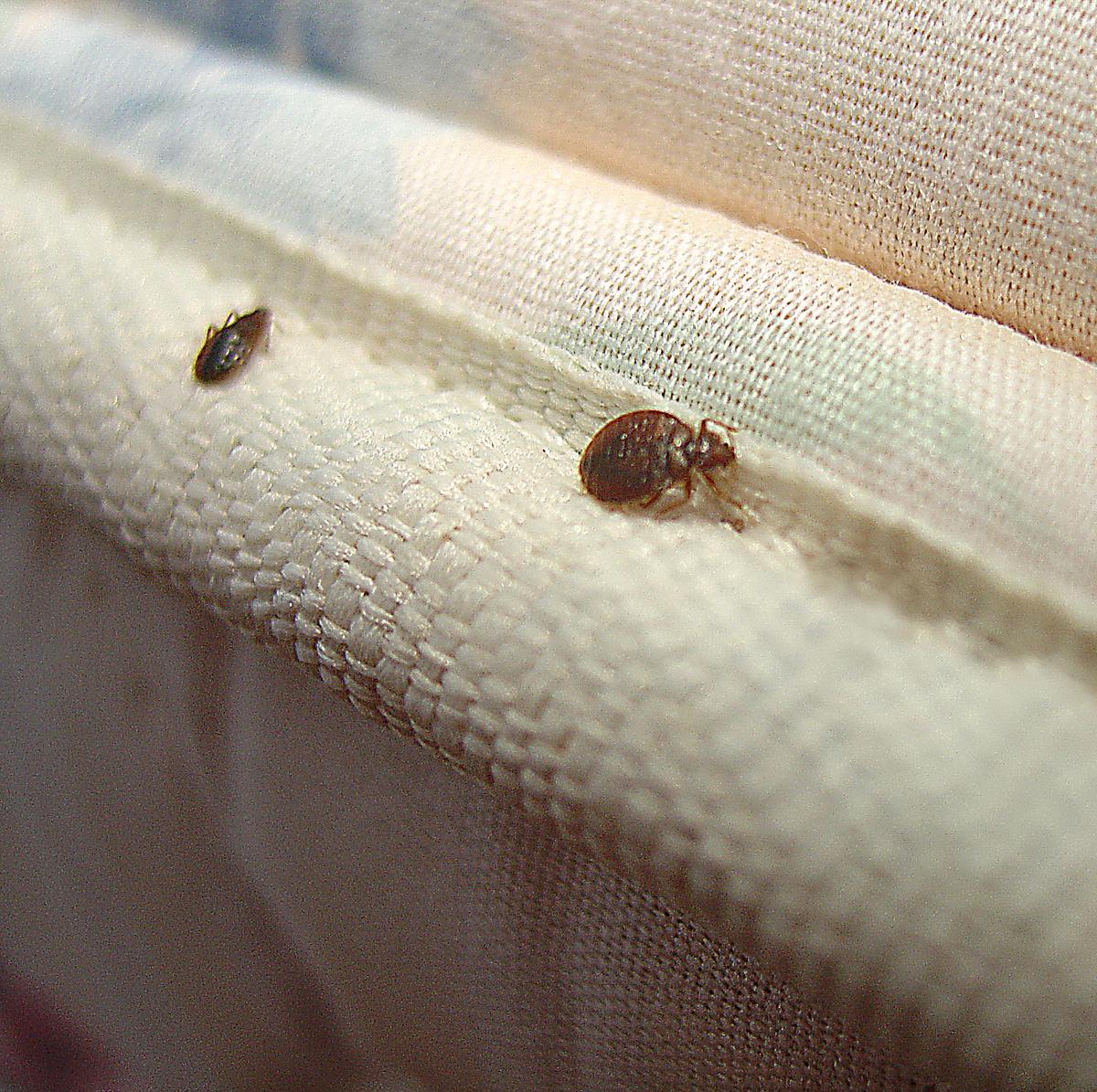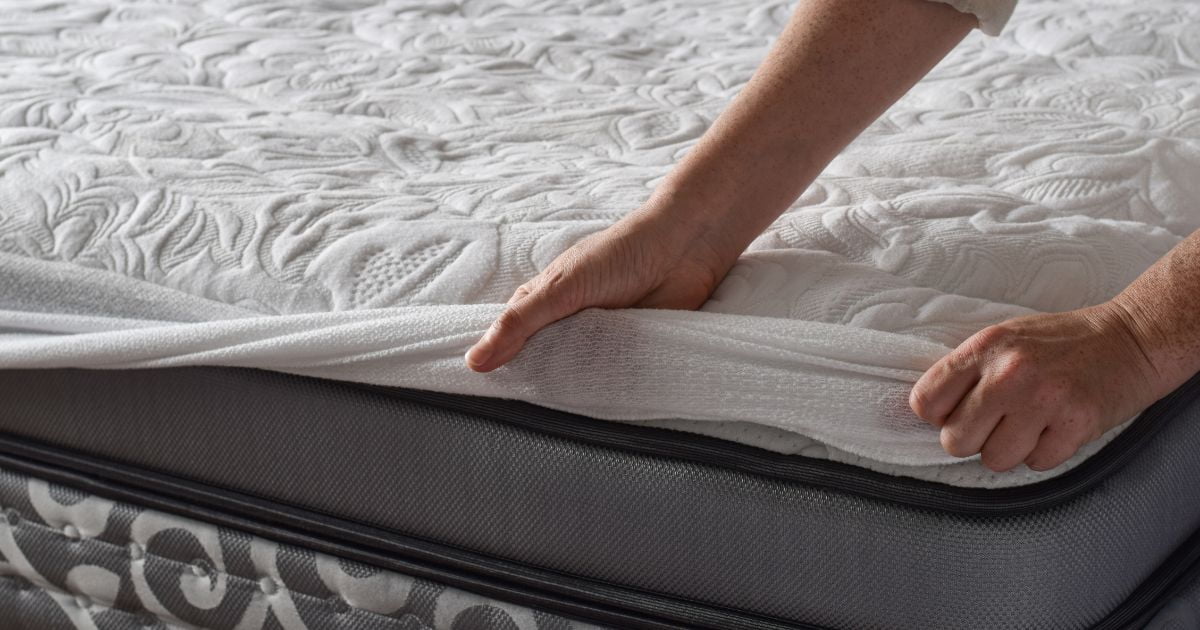To transport a mattress with bed bugs, carefully encase it in a mattress cover to prevent the bugs from spreading, then tightly wrap the mattress in plastic and seal it securely before moving it to prevent bed bugs from infesting other areas. Transporting a mattress infested with bed bugs requires careful handling to avoid spreading the infestation.
While it may be tempting to simply dispose of the infested mattress, it’s important to take proper precautions to prevent the spread of bed bugs during transportation. We’ll discuss the essential steps to effectively transport a mattress with bed bugs, ensuring that the infestation does not spread to other areas.
By following these guidelines, you can minimize the risk of spreading bed bugs while relocating a mattress.
Preparation
Transporting a mattress with bed bugs requires careful preparation. Start by isolating the infested mattress in a tightly sealed cover to prevent the bugs from escaping during transport. Take caution to avoid spreading the infestation, and consider professional pest control assistance to ensure proper handling and disposal.
Inspecting The Mattress
Sealing The Mattress
“`Preparing to transport a mattress with bed bugs requires careful consideration and meticulous planning to prevent the spread of these unwanted pests. Prior to moving the mattress, it’s crucial to inspect it thoroughly to identify the presence of bed bugs. This step is essential in ensuring that the infestation does not spread to other areas during transportation.“`htmlInspecting The Mattress
“`To begin the inspection, remove all bedding and linen from the mattress surface. Focus on the seams, corners, and edges where bed bugs are likely to hide. Use a flashlight to illuminate the areas and look for small reddish-brown bugs, eggs, or dark fecal spots. If any signs of bed bugs are found, proceed with caution to seal the mattress properly before transport.“`htmlSealing The Mattress
“`After inspecting the mattress, the next step is to seal it effectively to contain the bed bugs and prevent them from spreading. Encase the mattress in a specially designed bed bug proof cover that is tightly woven to prevent escape. Ensure the cover is secured with a zippered closure and any openings are sealed with tape to prevent bed bugs from getting in or out.Taking the necessary precautions during the preparation phase is essential when transporting a mattress with bed bugs to avoid infesting other areas. Inspection and sealing are key steps in ensuring that the bed bugs are contained and do not pose a risk during transport.Disposal Options
When dealing with a mattress infested with bed bugs, proper disposal is crucial to prevent spreading the pests. Here are some disposal options to consider:
Professional Removal Services
Contacting professional removal services can provide a safe and efficient way to dispose of a mattress infested with bed bugs.
Local Sanitation Department
Reach out to your local sanitation department to inquire about their disposal guidelines and services for items like mattresses with bed bugs.
Moving Techniques
Transporting a mattress infested with bed bugs can be a challenging task. Follow these steps to safely move a mattress contaminated with bed bugs, preventing the pests from spreading to other areas of your home during the move.
Use A Mattress Encasement
When it comes to moving a mattress infested with bed bugs, using a mattress encasement can be an effective technique. A mattress encasement is a protective covering that completely seals the mattress, preventing any bed bugs from escaping or entering. It is crucial to invest in a high-quality encasement with a zipper that is designed to be bed bug proof.
Here’s how you can use a mattress encasement for transporting a mattress with bed bugs:
- Start by thoroughly cleaning the mattress by vacuuming it to remove any bed bugs, their eggs, or traces of their excrement.
- Once the mattress is clean and dry, carefully place it into the mattress encasement.
- Ensure that the mattress is aligned properly within the encasement and there are no gaps or openings.
- Zip up the encasement completely, making sure to seal it tightly.
- Consider using additional reinforcement by using heavy-duty tape to secure the zipper area.
- Label the mattress encasement clearly to indicate the presence of bed bugs, both for your own safety and for the precautions of others
Wrap The Mattress In Plastic
Wrapping the mattress in plastic is another effective technique for transporting a mattress infested with bed bugs. The plastic wrap creates a barrier that prevents the bed bugs from escaping and infesting other areas during the move.
Here’s how you can wrap the mattress in plastic:
- Start by cleaning and vacuuming the mattress thoroughly to eliminate any bed bugs or eggs.
- Choose a durable and thick plastic wrap that is large enough to cover the entire mattress.
- Unroll the plastic wrap and place the mattress in the center.
- Slowly, wrap the mattress tightly with the plastic, making sure to overlap the edges to ensure there are no gaps.
- Secure the plastic wrap with tape or cling film, ensuring that every part of the mattress is enclosed.
- Label the plastic wrap clearly to indicate the presence of bed bugs, both for your own safety and for the precautions of others.

Credit: www.1800gotjunk.com
Safeguarding The Surroundings
When transporting a mattress with bed bugs, it’s crucial to safeguard the surroundings to prevent the spread of these pesky critters. Follow these steps to ensure a safe and hygienic process.
Clean The Transporting Vehicle
Before loading the mattress into the vehicle, thoroughly clean the interior to eliminate any potential hiding spots for bed bugs. Use a powerful vacuum cleaner to remove any debris and dirt, paying special attention to crevices and corners. Wipe down all surfaces with a disinfectant to kill any remaining bed bugs or eggs.
Protective Clothing And Gloves
Prior to handling the mattress, put on protective clothing and gloves to minimize the risk of bed bugs attaching to your attire. Wear long sleeves and pants to cover exposed skin, and opt for gloves to shield your hands. This proactive approach helps to prevent bed bugs from latching onto your clothing and skin during the transportation process.
Informing Others
When transporting a mattress with bed bugs, it’s crucial to inform others involved in the process about the situation. Proper communication is essential in preventing the spread of bed bugs and ensuring everyone’s safety.
Notify The New Destination
Before moving the mattress to a new location, it’s important to notify the destination about the bed bug infestation. Whether it’s a friend’s house, a new apartment, or a storage facility, informing the new destination allows them to take necessary precautions to avoid the spread of bed bugs.
Warn The Movers Or Helpers
When enlisting the help of movers or volunteers, it’s critical to disclose the presence of bed bugs. Educate them on the signs of bed bugs and provide guidelines for preventing the spread of these pests. This ensures that everyone involved can protect themselves and their belongings from potential infestation.
:max_bytes(150000):strip_icc()/TAL-empty-paris-metro-train-BEDBUGSPARIS1023-01eee469787640b48677149a7ade0420.jpg)
Credit: www.travelandleisure.com
Alternative Transporting Methods
When faced with the task of transporting a mattress infested with bed bugs, it’s crucial to take extra precautions to prevent the further spread of these pesky pests. Regular moving methods may not be effective, as bed bugs can easily cling onto fabrics or hide in crevices. Thankfully, there are alternative methods that can be used to transport a mattress with bed bugs safely and effectively. In this article, we will explore two such methods: steam treatment and fumigation.
Steam Treatment
Using steam to treat a mattress infested with bed bugs is an efficient and chemical-free method. The high temperatures generated by steam can effectively kill bed bugs and their eggs, ensuring that your mattress is safe to transport without the risk of spreading these unwelcome guests to other areas.
Here’s how you can use steam treatment to transport a mattress with bed bugs:
- Start by renting or purchasing a steam cleaner specifically designed for bed bug treatment.
- Using the steam cleaner, thoroughly treat all surfaces of the infested mattress, paying special attention to seams, crevices, and tufted areas.
- Continue steaming the mattress until the temperature reaches at least 160°F (71°C), as this temperature is known to kill bed bugs and their eggs.
- After steaming, ensure that the mattress is completely dry before packaging it for transportation.
- Once the mattress is dry, encase it in a bed bug-proof cover to prevent any potential hitchhikers from escaping during transport.
Fumigation
Fumigation is a highly effective method of exterminating bed bugs in a large-scale infestation. This method involves using specialized chemicals to eliminate bed bugs and their eggs from the mattress, ensuring that they won’t survive the transportation process.
Here’s how you can fumigate a mattress infested with bed bugs:
- Consult with a professional pest control company to schedule a fumigation treatment for your mattress.
- Prior to fumigation, remove all bedding materials and any other items from the mattress.
- Seal the mattress in a fumigation bag, ensuring it is tightly sealed to prevent the escape of any chemicals.
- Leave the mattress in the fumigation bag for the recommended period stated by the pest control professionals. This duration varies depending on the severity of the infestation.
- After the designated period, open the fumigation bag in a well-ventilated area to allow the chemical fumes to dissipate.
- Once the fumes have dissipated, inspect the mattress for any signs of remaining bed bugs or their eggs.
- Re-encase the mattress in a bed bug-proof cover and proceed to transport it to the desired location.
By following these alternative transporting methods, you can ensure the safe and efficient transportation of a mattress infested with bed bugs. However, it is always advisable to seek professional assistance to effectively eliminate and treat bed bug infestations.
Post-transportation Tips
Discover effective post-transportation tips for handling a mattress infested with bed bugs. Learn expert techniques to transport and prevent spreading bed bugs during the move. Implement these strategies to safeguard your home and ensure a smooth relocation process.
Inspect And Treat New Location
Upon reaching the new location, carefully examine the surroundings for any signs of bed bugs. Utilize a flashlight to check in cracks and crevices. Treat the areas with bed bug spray or powder to prevent infestation.
Dispose Of Transportation Materials
Ensure thorough elimination of transportation materials such as boxes, plastic covers, and moving blankets. Seal and discard these items immediately away from living spaces to avoid spreading the infestation further.

Credit: www.orkin.com
Preventing Future Infestations
Regular mattress maintenance is crucial for preventing future infestations. Make sure to regularly inspect your mattress for any signs of bed bugs. Washing and drying your bedding frequently can help keep bed bugs at bay.
Regular Mattress Maintenance
- Inspect mattress regularly for bed bugs
- Wash bedding in hot water and dry on high heat
- Use mattress encasements to trap any remaining bed bugs
Eliminating Bed Bugs From The Home
- Declutter your living space to eliminate potential hiding spots
- Vacuum regularly to pick up any bed bugs and eggs
- Consider hiring a professional exterminator for severe infestations
Frequently Asked Questions On How To Transport A Mattress With Bed Bugs?
Can Bed Bugs Infest A Mattress During Transportation?
Yes, bed bugs can infest a mattress during transportation, especially if it’s not properly protected. They can easily crawl into the fabric and crevices of the mattress, so it’s crucial to take preventive measures when moving a mattress with bed bugs.
How Can I Transport A Mattress With Bed Bugs Without Spreading Them?
To transport a mattress with bed bugs without spreading them, use a mattress encasement that is designed specifically to trap bed bugs. Additionally, sealing the mattress in plastic wrap and using a mattress cover can help contain the bed bugs during transportation.
What Precautions Should I Take When Transporting A Mattress With Bed Bugs?
When transporting a mattress with bed bugs, it’s important to seal the mattress in a protective covering, inspect it thoroughly for any signs of bed bugs, and transport it in a secure and controlled manner to prevent the spread of bed bugs to other areas.
Can I Treat The Mattress For Bed Bugs Before Transportation?
Yes, it’s advisable to treat the mattress for bed bugs before transportation. Using a bed bug spray or contacting a professional pest control service to eliminate the bed bugs can help prevent the infestation from spreading during the transportation process.
Conclusion
Transporting a mattress infested with bed bugs can be a tricky and delicate task. By following the proper techniques and precautions, you can minimize the risk of spreading these pesky insects to other areas. Remember to wrap the mattress tightly in plastic, seal any openings, and handle it with care.
Additionally, always inform the receiving party about the bed bug infestation to ensure they take appropriate measures. With these guidelines in mind, you can safely transport a mattress with bed bugs and prevent further infestations.
Related posts:

I’m MD Tanvir, and I bring years of expertise gained from working closely with pest control companies to the forefront. My journey in the industry has inspired me to launch Bug Battler, a platform aimed at equipping people with the know-how to combat pests autonomously. Through Bug Battler, I aim to empower individuals with practical insights to tackle pest infestations effectively.

